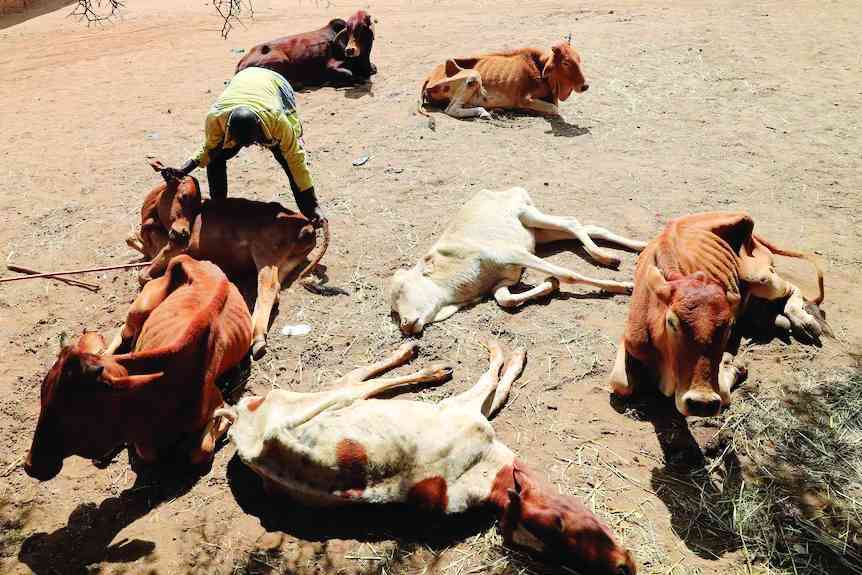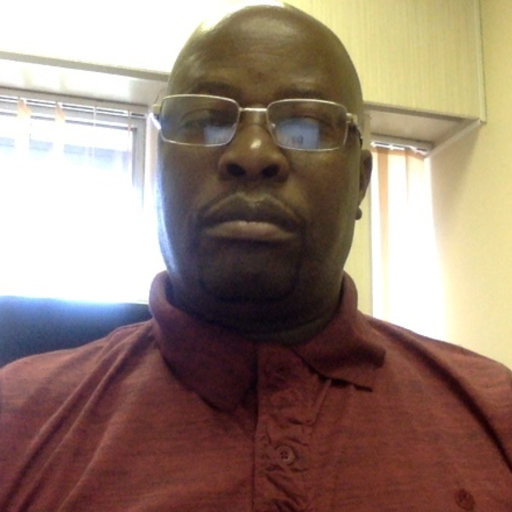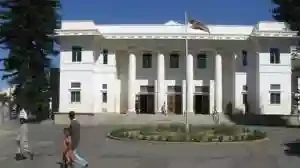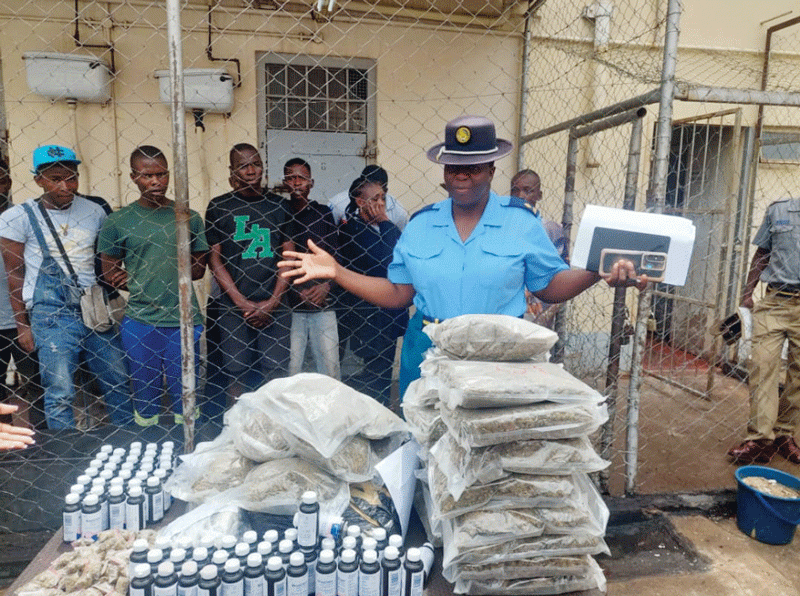AMID the bustling chaos at the border crossing between Zimbabwe and South Africa in 2008, a microcosm of Zimbabwe’s internal turmoil unfolded.
The air was thick with anticipation, a palpable tension mingling with the exhaust fumes of countless vehicles.
As my sister (Samantha) and I navigated the labyrinthine lines of cars and trucks, the landscape mirrored the uncertainty of our nation’s economy — a landscape of worn faces, weary yet resilient, etched with determination to seek a better future.
The confines of our car felt suffocating, a stark contrast to the vastness of the horizon ahead, as we left behind the harsh reality of empty grocery store shelves and the scarcity of basic necessities.
Our luggage, carefully packed, harboured not trinkets or mementoes, but the lifeblood of survival — formula for my newborn brother, yoghurt, diapers — a symbol of the undeniable need to grow up before our time, commonplace among all Zimbabwean youth.
In those tumultuous times, travelling to neighbouring countries like South Africa became a lifeline for many Zimbabweans.
Keep Reading
- Mavhunga puts DeMbare into Chibuku quarterfinals
- Bulls to charge into Zimbabwe gold stocks
- Ndiraya concerned as goals dry up
- Letters: How solar power is transforming African farms
Each day brought new challenges as prices fluctuated uncontrollably, rendering retailers unable to keep goods stocked.
The grocery stores, once bustling hubs of commerce, now stood as barren wastelands, their shelves stripped bare by the relentless tide of economic turmoil.
We became accustomed to the ritual of queuing, a seemingly endless procession of bodies stretching into the distance, each person patiently awaiting their turn to enter the store and procure the meagre rations available.
Baking hope amid crisis
It was a lesson in adaptability — a harsh reminder that survival often necessitates innovation. Unable to rely on the whims of the market, we turned to the age-old practice of baking bread at home.
Transforming our kitchens into makeshift bakeries as we kneaded dough with hands calloused by hardship.
The scent of freshly baked bread wafted through the air, a small beacon of comfort amid the chaos of uncertainty.
Yet, even as we adapted to the challenges of daily life, the spectre of scarcity loomed large, a constant reminder of the fragility of our existence.
Queuing and waiting became a cornerstone of our identity as Zimbabweans. We waited for resources, we waited for change, but in the process, we learned survival that could not be fostered in the community, falling us into the throes of a fractured society riddled with mistrust and insecurity.
The multi-currency system, introduced in Zimbabwe in 2009, allowed the country to use various foreign currencies, such as the US dollar, South African rand and others, alongside the Zimdollar for domestic transactions.
This system was adopted in Zimbabwe as a response to the severe economic crisis and hyperinflation that had rendered the Zimdollar virtually worthless.
By officially adopting foreign currencies, the government aimed to stabilise the economy, restore confidence in the financial system and curb the rampant inflation that had devastated the purchasing power of the local currency.
However, the introduction of the multi-currency system also brought unforeseen challenges, particularly to Zimbabwe’s formal sector.
As the economy collapsed, many workers found themselves in precarious situations — either unpaid or compensated in the rapidly depreciating local currency before the full transition to foreign currencies.
This created disparities and complexities in salary payments, financial planning and overall economic participation, as the sudden shift did not instantly resolve the deep-seated issues within the economy.
While the multi-currency system did stabilise prices and inflation temporarily, it also exposed the vulnerabilities of an economy heavily reliant on foreign currency without corresponding increases in productivity or foreign reserves.
The economic ruin upended lives overnight, turning the well-off into strugglers and forcing children out of schools.
Many of our friends’ parents sought refuge in distant lands, leaving behind fractured communities and shattered dreams.
Echoes of an economic fallout
As the economy collapsed, job losses became an all-too-common occurrence. According to 2023 data from the Zimbabwe National Statistics Agency, unemployment rates in the country have skyrocketed over the past decade, reaching alarming levels that have left countless families grappling with financial insecurity and uncertainty about the future.
As of 2023, Zimbabwe’s unemployment rate stood at approximately 19%, with youth unemployment even higher at around 25%.
These figures reflect a dramatic increase from previous years, as the unemployment rate was reported at 5,15% in 2014 and climbed steadily to 17,91% by 2020. The collapse of the formal sector, exacerbated by hyperinflation and currency instability, has forced many into informal employment, where job security and regular income are scarce.
In 2021, it was estimated that around 76% of the working population was engaged in informal employment, underscoring severe economic challenges and highlighting the severe economic challenges faced by the nation.
The impact of rising unemployment is profound and far-reaching. In urban areas, formerly bustling factories and businesses now lie dormant.
This includes the once-thriving textile industry and the collapse of household name brands such as Olivine Industries and the Meikles Hotel Group, both unable to withstand the economic turmoil.
Rural communities, traditionally reliant on agriculture, suffer as well, with persistent droughts and lack of resources crippling productivity.
The erosion of formal employment opportunities has led to a proliferation of informal markets, where individuals engage in petty trading, artisanal mining and other precarious forms of livelihoods.
Those who had once enjoyed stable employment suddenly found themselves thrust into the ranks of the unemployed, their livelihoods snatched away by forces beyond their control.
Against this backdrop of economic turmoil, Zimbabwe’s agricultural sector, a cornerstone of the nation’s economy, faced its own set of challenges.
Impending drought, water scarcity, and the larger economic crisis all converged to create a perfect storm of hardship for farmers across the country.
As crops withered in the fields and livestock perished from lack of nourishment, the very foundation of Zimbabwe’s agricultural economy began to crumble.
In our household, the dynamics shifted dramatically. My father, a once-prosperous farmer and war veteran, found himself grappling with his own demons in the face of mounting financial strain.
The farm that had once been a source of pride and prosperity now lay fallow, its fields barren and its future uncertain.
Meanwhile, my mother, a migrant from Senegal, fortunate to have a job that paid in US dollars — stepped into the role of the family’s sole breadwinner, bearing the weight of responsibility for our household’s financial survival.
Fractured foundations
The resulting strain from the change in dynamics took a noticeable toll on my parents’ relationship, manifesting in increased aggression and violence within the home.
My sister and I, witnessing the disintegration of our parents’ marriage, felt compelled to seek independence early, in a bid to ease the burden on our beleaguered parents and create opportunities for our younger siblings.
As the economic crisis deepened, so too did the fractures within our family, leaving us to navigate a world fraught with uncertainty and despair.
My sister’s journey into the world of finance, initially spurred by the need for survival, eventually led her to confront the harsh realities of Zimbabwe’s economic landscape head-on.
The time she spent in South Africa provided her with invaluable insights into the intricacies of global finance and economics, insights that we, as Zimbabweans, had previously lacked the language to articulate.
Returning to Zimbabwe as an adult, armed with her newfound knowledge, my sister was acutely aware of the disparities that plagued our nation’s economy.
Despite her qualifications and hard work, she found herself ensnared in a web of economic inequality, where wages were depressingly low and opportunities for advancement were few and far between.
Navigating economic challenges
According to the International Monetary Fund, Zimbabwe’s 2023 GDP per capita was stuck at a mere US$1 500, a stark contrast to the global average of US$12 000.
This enormous gap paints a vivid picture of the severe economic challenges Zimbabwe faces.
Coined the breadbasket of Africa, the country was once celebrated as one of Africa’s brightest prospects, but years of mismanagement, corruption and political turmoil had taken their toll.
Following its independence in 1980, Zimbabwe shone like a beacon of potential across the African continent.
The agricultural sector was the pride of the nation, making it one of the largest global exporters of tobacco, maize and cotton.
Its manufacturing industry was thriving, creating goods for both domestic consumption and export.
The education system was equally impressive, achieving one of the highest literacy rates in Africa at 90%.
This era of optimism and growth made many believe Zimbabwe was destined to become a leading economic power in the region.
However, the bright promise began to dim in the late 1990s and early 2000s. Under President Robert Mugabe, the government introduced controversial land reform policies intended to address historical injustices.
These policies led to the seizure of white-owned commercial farms, redistributing them to black Zimbabweans, often without the necessary support or resources.
This drastic change caused a sharp decline in agricultural productivity, the backbone of Zimbabwe’s economy.
Economic mismanagement followed, characterised by hyperinflation that reached a mind-boggling 89,7 sextillion percent year-on-year in November 2008.
Currency instability compounded the issue, eroding the purchasing power of ordinary Zimbabweans to a point where many struggled just to meet their basic needs. The promise of prosperity had given way to a daily struggle for survival.
Decades under Mugabe’s ruling party were marked by intimidation, violence and electoral manipulation, fostering a culture of corruption where public funds were misappropriated while the majority lived in poverty.
His presidency ended abruptly in 2017 through a military coup, which initially raised hopes for economic recovery under new leadership but ultimately left many disillusioned.
The 2017 military coup in Zimbabwe was a culmination of deep-seated political tensions within the ruling Zanu PF party, aggravated by the country’s ongoing economic decline.
The power struggle that unfolded was between two factions within Zanu PF: the so-called Generation 40 (G40) faction, led by then First Lady Grace Mugabe, and the Lacoste faction, led by then Vice-President Emmerson Mnangagwa.
Grace’s rise to prominence began as her husband, Mugabe, who had ruled Zimbabwe since its independence in 1980, began showing signs of declining health and increasing frailty.
With Mugabe’s advancing age, concerns about the future leadership of both the party and the country grew.
Grace, initially known primarily for her lavish lifestyle, started to involve herself more directly in politics.
She quickly rose through the ranks of Zanu PF, positioning herself as a potential successor to her husband, particularly through her influence over the younger, ambitious members of the party who formed the G40 faction.
Grace’s growing influence was seen by many as an attempt to establish a dynastic succession, keeping power within the Mugabe family.
Her ambitions, however, put her in direct conflict with Mnangagwa, a longtime Mugabe ally and a seasoned politician with strong support from the military and war veterans.
The rivalry between Grace’s G40 faction and Mnangagwa’s Lacoste faction intensified, particularly after Mugabe dismissed Mnangagwa from his position as vice-president in November 2017 — a move widely interpreted as clearing the way for Grace to succeed her husband.
The military, which had historically supported Mugabe but was wary of Grace’s rising power, intervened shortly after Mnangagwa’s dismissal.
It took control of the national broadcaster, deployed troops on the streets and placed Mugabe under house arrest.
Despite these actions, the military insisted it was not conducting a coup, likely to avoid Zimbabwe’s automatic suspension from the African Union and the Southern African Development Community, both of which have strong anti-coup stances.
This military intervention ultimately led to Mugabe’s resignation, ending his 37-year rule and paved the way for Mnangagwa to assume the presidency.
Grace’s political ambitions were effectively quashed and the G40 faction was sidelined within Zanu PF.
While the coup marked the end of Mugabe’s long and disastrous presidency, it also laid bare the reality that Zimbabwe was a de facto military dictatorship.
The military’s intervention, although it presented as a deviation from the norm, revealed its longstanding role as a pivotal actor in the country’s politics.
The military had previously helped Zanu PF rig elections and unleashed State terror to reverse electoral defeats, underscoring its deep entanglement with the ruling party.
The hope that Mnangagwa’s rise would herald positive change soon faded. As one of Mugabe’s principal enforcers, Mnangagwa was instrumental in the Gukurahundi massacres of the 1980s and the electoral violence of 2008.
His long history of enabling misrule and tyranny cast doubt on his willingness to embrace democracy and good governance.
Efforts of the Mnangagwa administration in 2024, to introduce the ZiG as a new gold-backed currency have been met with scepticism among Zimbabweans.
This is due to its limited usability for essential transactions such as taxes, groceries and fuel.
This lack of confidence has further strained the economy, contributing to a rise in crime, including armed robberies — a troubling development previously uncommon in Zimbabwe.
However, Zimbabwe’s economic woes cannot be solely attributed to fiscal mismanagement; they are also deeply intertwined with its tumultuous political landscape.
Decades of autocratic rule, electoral manipulation and the entrenchment of military power have created an environment where economic policies are often driven by political survival rather than sound economic principles.
This fusion of political instability and economic decline has perpetuated a cycle of corruption and inefficiency, making meaningful recovery increasingly difficult.
Internationally, Zimbabwe’s descent into economic and political turmoil has drawn increasing concern.
Sanctions imposed by the West in response to human rights abuses and electoral fraud have exacerbated the country’s challenges, isolating it from the global economy and hindering essential foreign investment.
Amid these dire circumstances, my sister’s story epitomises the broader struggles facing Zimbabweans.
Despite her diligent efforts to secure stable employment and build a better future, she remains ensnared in a cycle of poverty and uncertainty, constrained by systemic economic inequalities.
Intersectional challenges
Our story is not unique; it echoes the struggles of countless Zimbabweans.
While my sister and I had certain privileges, many others were not as fortunate. Unemployment rates soared to unprecedented levels, leaving educated youth adrift in a sea of uncertainty, their dreams dashed against the rocks of economic instability.
Despite their qualifications and aspirations, job opportunities remained elusive, forcing them into a cycle of despair and disillusionment.
However, the challenges facing Zimbabweans extended far beyond the realm of employment. Drug abuse became rampant, fuelled by a sense of hopelessness and despair that gripped the nation’s youth.
Families were torn apart as loved ones succumbed to addiction, their lives consumed by a never-ending cycle of substance abuse and despair.
Meanwhile, the healthcare system — already stretched thin by years of neglect and mismanagement — crumbled under the weight of mounting pressure.
Basic medical supplies were in short supply, leaving hospitals and clinics ill-equipped to meet the needs of the population.
Those who could afford it sought treatment abroad. While the majority languished in overcrowded and under-resourced facilities, their cries for help fell on deaf ears.
Through all of this, the cost of living continues to skyrocket, pushing basic human needs further out of reach for the average Zimbabwean.
Currencies came and went, with each new iteration failing to stem the tide of economic uncertainty.
The latest development — a currency directly tied to gold —offered little respite for those struggling to make ends meet.
Its value was eroded by a government-sanctioned bank rate that fuelled the black market and lined the pockets of the elite.
Crippled with resilience
Armed with her finance education and my freshly minted master’s degree, my sister and I possess a keen understanding of the socio-economic factors that continue to cripple our beloved Zimbabwe.
One would think that this knowledge would empower us to enact change. Instead, it serves as a stark reminder of the dire state of affairs in our nation.
The truth is, there is no happy ending in sight — at least not for now. With every passing day, the challenges facing Zimbabwe seem to grow more insurmountable, leaving us feeling helpless and disheartened.
The trauma of our collective struggles weighs heavily on our hearts, fracturing our communities and eroding the bonds of solidarity that once held us together.
- MbMarie-Simone Kadurira is an advocate and researcher specialising in gender, economic development, and social justice in southern Africa.





